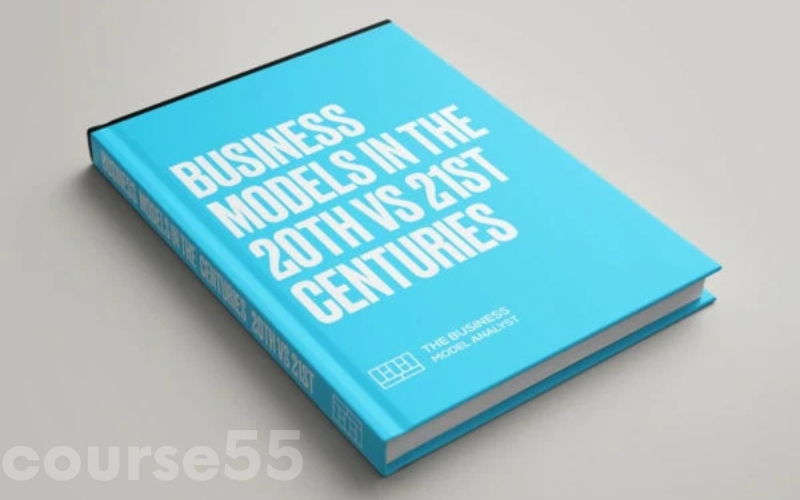Business Models in the 20th vs 21st Centuries By Daniel Pereira – The Business Model Analyst
$19.00 $5.00
File Size: 2.70 MB
Delivery Time: 1–12 hours
Media Type: Ebook
Business models in the 20th vs 21st centuries
In a dynamic environment, cultural changes, technical breakthroughs, and customer tastes compel organizations to consistently reevaluate their tactics. In “business models in the 20th vs 21st centuries,” Daniel Pereira examines the divergent frameworks employed by firms, highlighting the continuous evolution of value generating concepts. As we transition from the 20th century, defined by conventional manufacturing and service models, to the 21st century, characterized by digitalization and innovative paradigms, we get insights into the essential processes that drive modern corporate operations. Pereira’s analysis aids businesses and strategists in understanding historical contexts while equipping them to adjust to forthcoming changes. This article elaborates on the fundamental aspects of Pereira’s work, clarifying how the dynamics of business models evolve over generations.
Introduction to business models
Business models serve as the blueprint for an organization’s value creation strategy. They encapsulate how a company intends to make money, what products or services it offers, and how it engages with its customers. The importance of understanding business models cannot be overstated it dictates the strategic direction of a company and indicates its ability to adapt to changing environments.
In the 20th century, business models predominantly revolved around the industrial age, where mass production and economies of scale reigned supreme. Companies focused on efficiency, aiming to drive down costs and maximize output. Traditional supply chains and distribution channels were heavily relied upon, and customer relationships were often transactional. An example would be the Ford Motor Company, which illustrated the principles of mass production and standardization effectively.
Conversely, in the 21st century, the rise of technology and the internet has transformed business models into more dynamic frameworks. Today’s organizations navigate complex ecosystems, leveraging data analytics, cloud computing, and ubiquitous connectivity. The interaction with customers has evolved into a more personalized experience as companies seek to build long-term relationships rather than temporary transactions. Amazon, for instance, has redefined retail through data-driven personalization, disrupting traditional models with a focus on customer-centric strategies.
Key Elements in Business Model Evolution
Understanding how business models transitioned over the decades is key. The following table delineates critical elements of business models in both centuries:
| Number | Aspect | 20th Century | 21st Century |
| 1 | Value Creation | Mass production | Tailored experiences |
| 2 | Customer Interaction | Transactional | Relational |
| 3 | Technology Usage | Limited to physical processes | Data and digital integration |
| 4 | Distribution Channels | Traditional supply chains | Omnichannel networks |
| 5 | Revenue Streams | Sales and direct transactions | Subscription and freemium models |
By placing these contrasting aspects side by side, we can comprehend the dramatic shifts in the conceptualization of business. The 21st century displays a flexibility and adaptive quality that the previous century lacked, showcasing the need for organizations to pivot rapidly amidst constant change.
Analysis of Specific Industries
Pereira’s investigation delves further, examining how particular industries have addressed their distinct obstacles in this evolution. Let us explore many significant sectors: media, grocery, transportation, and entertainment.
1. Apply pressure
The press industry exemplifies the transition from conventional to contemporary corporate paradigms. During the 20th century, newspapers and magazines used a model focused on subscriptions and advertising income. Elevated printing expenses and laborious distribution procedures established considerable obstacles for new entrants. Nonetheless, digital technology has transformed the media environment. Digital platforms like BuzzFeed and HuffPost emphasize engagement metrics and instantaneous content creation, largely depending on social media to foster virality and expand reach.
2. Supermarket
The grocery sector has experienced a significant transformation. Historically, physical retail establishments prevailed in this sector, with income primarily derived from in-store patrons. However, the emergence of platforms such as Instacart and Amazon Fresh has led to a significant increase in online grocery purchasing. This transition enhances convenience and incorporates data analysis to provide tailored purchasing experiences, demonstrating a contemporary comprehension of customer requirements.
3. Mobility
In the analysis of the mobility industry, observe how ride-sharing platforms such as Uber have transformed traditional taxi services. The 20th-century paradigm was predominantly based on ownership and fixed expenses, while the contemporary approach emphasizes access and adaptability. Uber’s technology-centric strategy utilizes real-time data to link drivers and passengers, markedly decreasing wait times and operational inefficiencies.
4. Amusement
The entertainment industry’s shift from physical to digital is seen in content consumption patterns. Cinemas were formerly the main sources of revenue, but 21st-century platforms such as Netflix and Spotify depend on streaming subscriptions, consigning traditional models to obsolescence. The focus is on user experience, constant content delivery, and algorithmic suggestions, guaranteeing personalized offerings that align with individual tastes.
Pereira highlights industry-specific alterations, demonstrating the evolution of business mechanics and the essential need to adapt to consumer behavior and technology progress.
Understanding Value Creation
A fundamental tenet highlighted by Pereira is the necessity for companies to locate where value is created within their models. The 20th century emphasized efficiency, often overlooking the profound ways in which businesses could potentially engage with their customer base. Long-term relationships were not prioritized, limiting opportunities for brand loyalty.
In contrast, the 21st-century boasts an evolved conception of value creation, shifting from mere transaction-oriented approaches to multifaceted customer engagement mechanisms. Companies today are tasked with understanding not just what consumers purchase, but why they make those choices. Personalization, customer feedback loops, and a community-driven culture become vital in this new paradigm.
For instance, Starbucks has excelled in engaging customers through its Reward system, fostering brand loyalty and increasing lifetime customer value. Since ideas around value creation have transitioned, businesses that fail to innovate and adjust to these expectations face the grim reality of obsolescence.
Comparative Analysis of Value Creation
| Aspect | 20th Century Focus | 21st Century Focus |
| Customer Engagement | Limited and transactional | Ongoing and personalized |
| Brand Loyalty | Minimal | High with programs like memberships |
| Feedback Utilization | Sparse | Integral for innovation |
| Community Building | Absent | Central to brand identity |
The evolution of these focus points demonstrates a significant shift in how businesses operate today. The emphasis is now on creating community, engagement, and emotional connection all vital components of contemporary value creation.
Exploring the Future: Principal Discoveries
Pereira concludes that business models must adapt and innovate to succeed in a progressively competitive environment. His insights are especially pertinent for both startups and established enterprises. The contemporary marketplace is characterized by swift transformation and uncertainty, significantly heightening the necessity for adaptation. The repercussions for those who fail to keep up are seen in numerous accounts of organizations that have succumbed, unable to compete effectively with more agile competitors.
The book functions as a guide, directing readers through essential elements of business model adaptations while highlighting the continuous assessment of value creation methods and locations. Pereira states, “the method of value addition today differs from that of the past and will continue to evolve in the future.”
Entrepreneurs are urged to analyze their business models consistently, examining their strategies and comprehending their changing customer demographics. Success in the 21st century depends on the capacity to be adaptable and prepared for change.
Conclusion
In summary, Daniel Pereira’s “business models in the 20th vs 21st centuries” unveils a compelling narrative that illustrates the remarkable evolution of the ways businesses create value. By comparing industries and emphasizing the crucial elements of value creation, it becomes clear that the 21st-century business model is defined by adaptability, personalization, and connection. The landscape has shifted dramatically, filled with opportunities for those willing to embrace change. As we look to the future, understanding and responding to these dynamics will be imperative, guiding organizations toward sustainability and success in a complex world.
This exploration serves not only to educate but also to inspire action, urging businesses to become more than mere spectators in the realm of innovation they must become active participants sculpting their destinies.
Frequently Asked Questions:
Business Model Innovation: We use a group buying strategy that enables participants to share costs and access popular courses at lower prices. This approach helps individuals with limited financial resources, although it may raise concerns among content creators regarding distribution methods.
Legal Considerations: Our operations navigate complex legal issues. While we do not have explicit permission from course creators to resell their content, there are no specific resale restrictions mentioned at the time of purchase. This lack of clarity allows us to offer affordable educational resources.
Quality Control: We guarantee that all course materials provided are identical to those offered directly by the creators. However, please note that we are not official providers. As a result, our services do not include:
– Live coaching calls or sessions with the course author
– Access to exclusive author-controlled groups or portals
– Membership in private forums
– Direct email support from the author or their team
Our goal is to make education more accessible by offering these courses independently, without the additional premium services available through official channels. We appreciate your understanding of our unique approach.
Be the first to review “Business Models in the 20th vs 21st Centuries By Daniel Pereira – The Business Model Analyst” Cancel reply
You must be logged in to post a review.


















Reviews
There are no reviews yet.